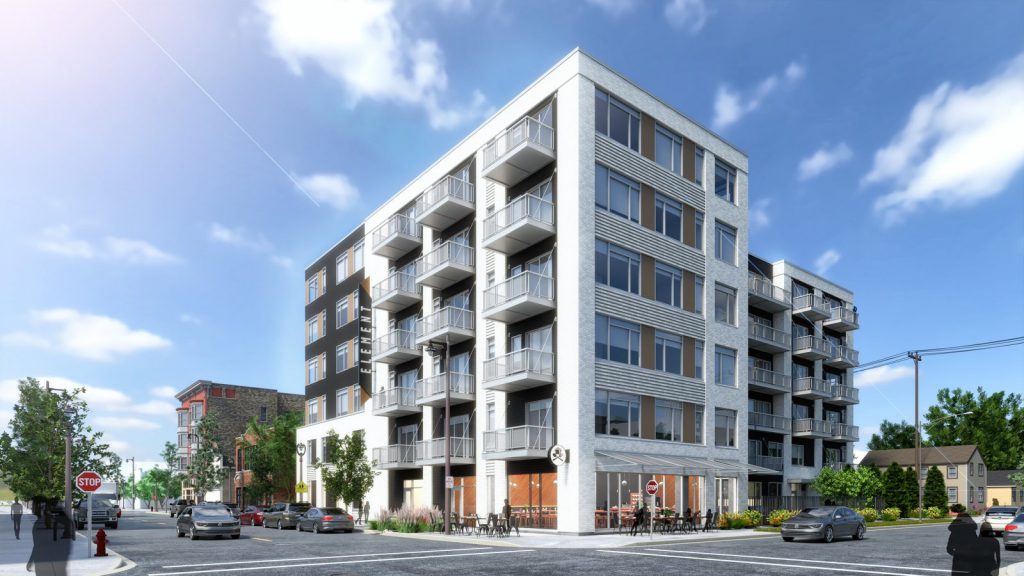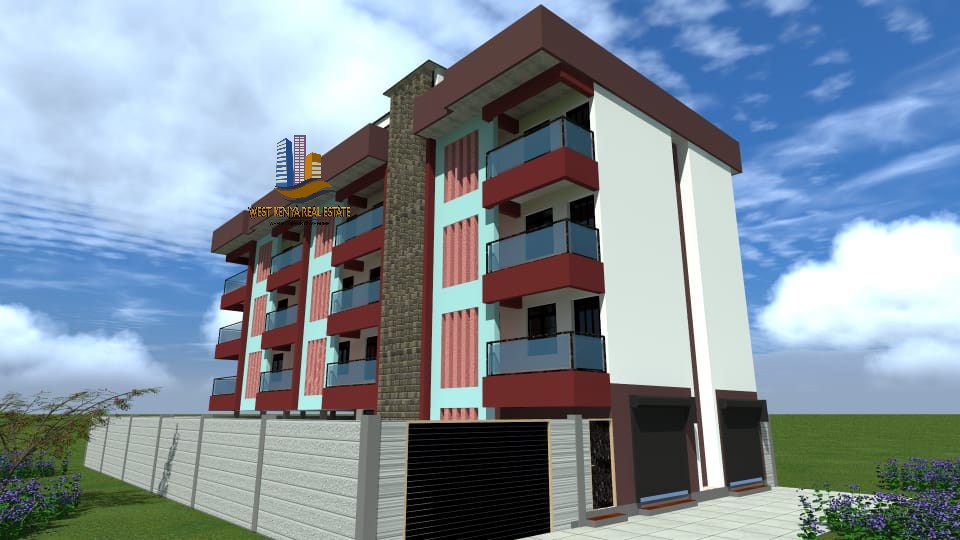The Shift Towards Rental Housing
Explore the rise of rental housing in Kenya, the decline in homeownership rates, and what it means for renters, buyers, and investors. Learn key trends, affordability challenges, and strategic tips for navigating Kenya’s property market.
Introduction
The Shift Towards Rental Housing
The landscape of rental housing in Kenya is rapidly changing, reflecting shifts in urbanisation, affordability, and lifestyle preferences. Many Kenyans, especially in cities, are choosing to rent rather than buy, signaling a subtle decline in homeownership.
Understanding these trends is critical for anyone considering whether to rent or purchase a home. This article explores the factors driving the rise of rental housing, the challenges facing homebuyers, and practical advice for navigating Kenya’s property market.
Whether you are a prospective renter, a first-time homebuyer, or an investor looking for opportunities, this guide will help you make informed decisions.
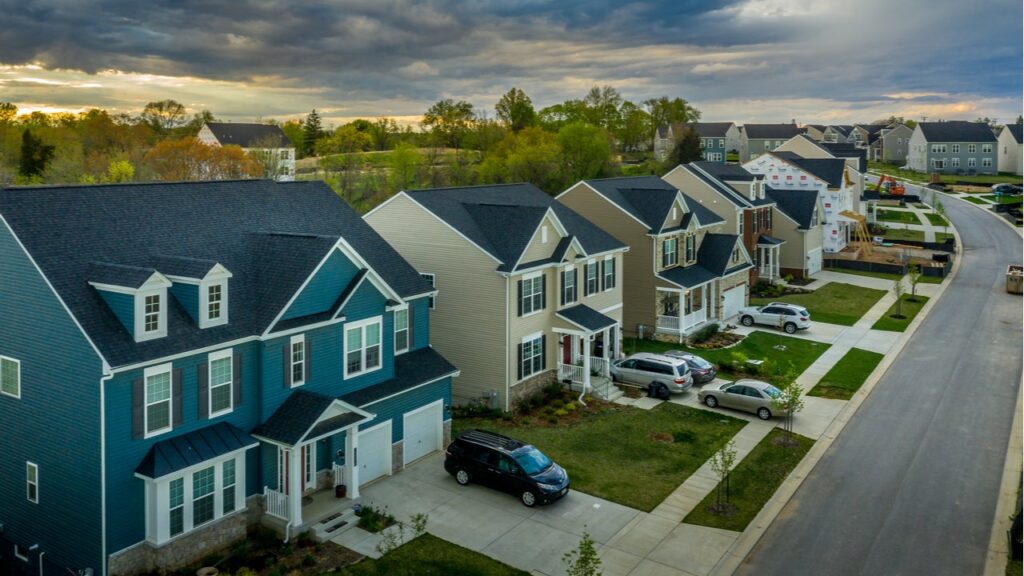
The Growth of Rental Housing in Kenya
Kenya’s rental housing market has grown significantly over the past decade. Increasing urbanisation, population growth, and changing lifestyle preferences have fueled demand for rental properties across cities and towns. Investors and developers are now paying close attention to these trends to maximise returns.
Urban migration and its impact on rentals
Rapid urban migration is one of the main drivers of rental housing demand in Kenya. Many young professionals and families move to cities like Nairobi and Mombasa in search of jobs, education, and better services. As a result:
- Rental housing in Nairobi and other major cities has become highly competitive.
- Short-term rental units and serviced apartments are increasingly popular.
- Tenants often prioritise proximity to work, schools, and transport links.
Satellite towns and emerging rental hotspots
With urban centers becoming congested, many Kenyans are seeking rental properties in satellite towns. These areas offer affordable housing options and growing infrastructure. Some key points:
- Towns like Athi River, Ruiru, and Thika are becoming popular for renters.
- Rental apartments in Kenya’s satellite towns often offer larger spaces at lower costs than city centers.
- Developers are increasingly targeting these towns to meet growing demand.
Demand for modern amenities and lifestyle-oriented rentals
Renters today are looking for more than just a roof over their heads. Modern amenities and lifestyle-oriented features influence where tenants choose to live. Examples include:
- Gated communities with security and recreational facilities.
- High-speed internet, gyms, and communal spaces in apartments.
- Ready-to-move-in and furnished units that suit busy urban lifestyles.
National Homeownership Trends in Kenya
Kenya’s homeownership landscape has been shifting steadily over the past decade. While rural areas still enjoy high ownership levels, urban centers are seeing a decline as many residents opt for rental housing instead. These trends reflect economic pressures, urbanisation, and changing lifestyle preferences among Kenyans. Understanding these patterns is crucial for anyone looking to rent, buy, or invest in property.
Homeownership rate statistics (urban vs rural)
Homeownership rates in Kenya show a stark contrast between rural and urban areas.
- Rural areas: About 80–85% of households own their homes, often inherited or built by family members. Homeownership here is not just a financial asset but also a cultural and generational investment.
- Urban areas: Ownership is significantly lower, with only 20–25% of residents owning property. The high cost of land, expensive construction, and limited access to finance make buying in cities challenging.
This gap between urban and rural ownership directly drives the growth of rental housing in Kenya, as more city residents are forced to rent apartments or houses.
Historical trends over the last decade
Over the last ten years, homeownership trends have evolved in Kenya due to economic and social factors:
- Urban homeownership has gradually declined from about 30% to under 25%, reflecting the rising cost of housing and shrinking affordability for the middle class.
- The growing young urban population prefers flexible rental options over long-term homeownership commitments.
- The construction of multi-family apartment complexes and serviced rental units has increased significantly, catering to urban tenants who cannot afford to buy.
This trend highlights the need for investors and policymakers to balance urban rental supply with programs aimed at increasing homeownership rates.
Mortgage uptake and financing constraints
Access to mortgage financing is one of the key factors affecting homeownership in Kenya:
- High mortgage rates: Many banks offer loans at rates that make monthly repayments difficult for average earners.
- Down payment hurdles: The required 10–20% deposit is out of reach for many first-time buyers.
- Eligibility requirements: Banks require proof of stable income, credit history, and sometimes collateral beyond the property itself.
- Loan processing delays: Long approval times mean potential buyers may miss opportunities in fast-moving housing markets.
These financing issues push many urban residents toward renting instead of committing to homeownership, contributing to the ongoing rise of rental housing in Kenya.
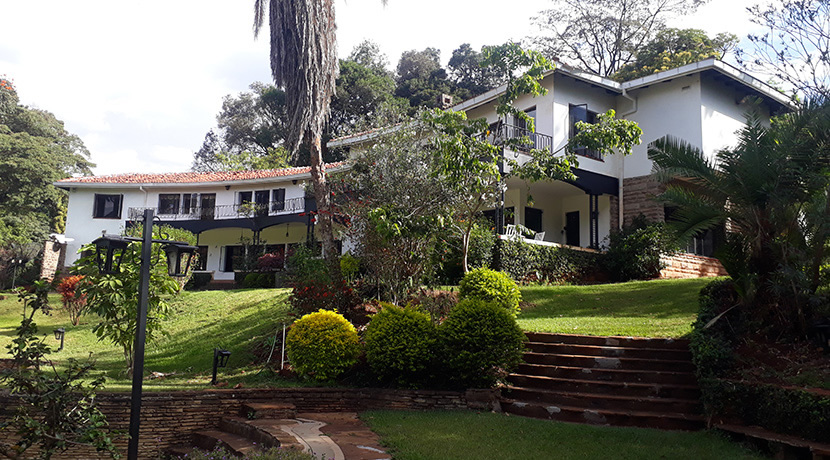
Why Renting is Increasingly Attractive
For many Kenyans, renting has become more than a temporary solution—it is now a practical and strategic choice. Rising property prices, lifestyle flexibility, and financial limitations are driving urban residents to seek rental housing rather than pursue homeownership.
Affordability challenges for buying homes
The high cost of buying property in Kenya makes renting a more viable option for many households:
- Land in urban areas such as Nairobi, Mombasa, and Kisumu is extremely expensive, often costing millions of shillings per plot.
- Construction costs for a decent home have increased significantly due to rising prices for cement, steel, and labor.
- Even households with steady incomes may struggle to meet mortgage deposits, making renting the only realistic choice.
- Renting allows households to allocate money to other priorities, like education, business investment, or savings, while still securing safe housing.
High cost of land and construction materials
The skyrocketing cost of land and building materials further pushes many toward rental housing:
- Urban plots are limited and highly sought after, which drives up the price per square meter.
- The price of construction materials like cement, steel, and timber has risen sharply, increasing total building costs.
- Labour shortages and rising wages add further financial strain for those attempting to build homes.
These costs make homeownership unattainable for many urban residents, increasing reliance on rental apartments in Kenya as an alternative.
Short-term mobility and lifestyle choices
Lifestyle and career mobility also make renting a more attractive option:
- Many professionals frequently relocate due to job transfers or new employment opportunities, making homeownership inconvenient.
- Renting provides flexibility without the need to sell a property quickly or pay capital gains taxes.
- Modern rental complexes offer amenities such as gyms, Wi-Fi, and communal spaces, catering to a convenient urban lifestyle.
Renting supports a flexible and mobile lifestyle, which is particularly attractive to young professionals and students.
Limited access to mortgage finance
Even if buying is desirable, financing constraints limit homeownership opportunities:
- Stringent bank eligibility requirements make it difficult for many potential buyers to qualify for loans.
- High mortgage interest rates reduce affordability, even for those with savings.
- Loan processing delays often discourage people from pursuing homeownership, pushing them to rent instead.
Renting thus becomes a safer, faster, and financially feasible option for urban residents.
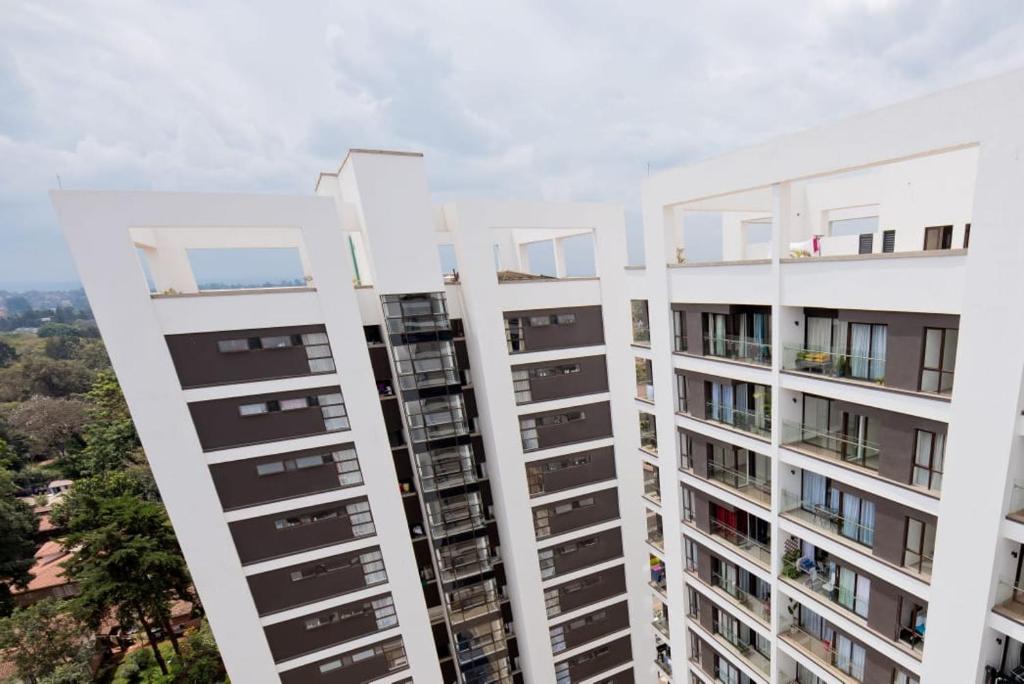
Supply-Side Challenges Affecting Homeownership
Kenya’s housing supply struggles significantly affect homeownership rates, especially in urban areas. Even when people are willing to buy, the lack of affordable options and slow delivery of housing units create barriers, pushing more residents toward renting.
Housing deficit in Kenya and slow delivery
Kenya faces a substantial housing deficit, estimated at over 2 million units in urban areas alone. Rapid population growth and urban migration intensify the pressure on existing housing stock, making affordable homes scarce. New developments often take years to complete due to regulatory hurdles, rising construction costs, and limited access to finance for developers. As a result, many prospective homeowners are forced to remain in the rental market longer than they planned, fueling the growth of rental housing in Kenya.
Developer risks and low supply of affordable homes
Developers face several challenges that slow the supply of affordable homes:
- High upfront costs for land and construction materials.
- Delays in approvals and permits from local authorities.
- Market uncertainty, especially in mid-income housing segments, makes developers cautious.
Because of these risks, there is a low supply of affordable homes in Kenya, particularly in cities. This scarcity increases reliance on rental housing as the default option for many urban residents.
Dual Living Patterns in Kenya
A unique feature of Kenya’s housing landscape is the dual living pattern, where many families own rural homes but rent in urban centers. This phenomenon affects both rental demand and the dynamics of homeownership in cities.
Owning rural homes but renting in cities
Many Kenyans maintain inherited or self-built homes in rural areas while renting in cities for work, education, or business. This dual arrangement allows them to invest in rural property while still accessing urban opportunities. The pattern highlights why homeownership rates in cities remain low despite high property ownership overall. Families can’t fully commit to buying urban homes due to cost, mortgage limitations, and uncertainty about long-term city residency.
Implications for urban rental demand
The dual living trend directly increases demand for rental housing in cities. Tenants are often long-term renters who treat urban homes as temporary, even if they have rural property. This creates a stable rental market, encourages developers to focus on apartment complexes rather than single-family homes, and shapes the pricing and availability of rental units in urban centers.
Impact on Renters
The shift toward rental housing in Kenya has created both opportunities and considerations for urban tenants. Renting is no longer just a temporary solution—it has become a practical choice for many professionals who need flexibility, affordability, and access to city amenities.

Benefits of renting vs buying for urban professionals
Renting provides urban professionals with several advantages over homeownership:
- Flexibility: Renters can relocate easily for new jobs, business opportunities, or lifestyle changes without the burden of selling property.
- Lower upfront costs: Unlike buying, renting avoids large deposits, legal fees, and mortgage commitments.
- Access to modern facilities: Many rental apartments offer gyms, security, and maintenance services that might be costly to replicate in owned homes.
This flexibility aligns with current urban rental trends in Kenya, especially among young professionals and middle-income earners who prioritise convenience and mobility.
Rental affordability and options across cities
Rental options vary widely across Kenya’s urban centers, giving tenants multiple choices:
- Nairobi and Mombasa have high-end apartments, serviced units, and shared housing for professionals.
- Satellite towns like Ruiru, Athi River, and Thika offer larger, more affordable units for families and long-term tenants.
- Amenities, transport access, and neighbourhood safety heavily influence rental pricing and demand.
Understanding the best places to rent in Kenya can help tenants balance cost, convenience, and lifestyle preferences.
Impact on Buyers
For prospective homeowners, the current housing market in Kenya presents both opportunities and risks. High costs, urban demand, and market fluctuations make it essential to weigh decisions carefully before committing to purchase.
Risks of buying now vs waiting
Buying property in today’s market carries potential risks:
- High property prices: Urban land and housing units are expensive, making immediate investment costly.
- Market volatility: Price fluctuations and interest rate changes can affect the long-term value of the property.
- Financial strain: Taking on mortgages at high rates may limit other financial opportunities or savings.
Some buyers may benefit from waiting for prices to stabilise or for government programs that increase access to affordable housing.
Considerations for first-time buyers
First-time homebuyers need to plan carefully to avoid common pitfalls:
- Budgeting realistically: Factor in deposit requirements, legal fees, and ongoing maintenance costs.
- Location: Choose areas with access to schools, transport, and amenities to ensure long-term value.
- Mortgage options: Compare rates from different lenders and consider repayment flexibility.
- Property type: Apartments may be more affordable than standalone houses in urban centers.
These factors are critical for anyone navigating the first-time homebuyer experience in Kenya, ensuring they make informed and sustainable investment decisions.

Investment Opportunities in Rental Housing
The growth of rental housing in Kenya presents lucrative opportunities for property investors. With urban migration, lifestyle shifts, and limited homeownership in cities, demand for rental units continues to rise, making the sector attractive for both new and experienced investors.
High-demand areas for rental property investment
Investors should focus on urban centers and satellite towns with high rental demand:
- Nairobi: Central business districts, Westlands, and Kilimani attract professionals seeking apartments near work and amenities.
- Mombasa: Coastal cities are popular for both long-term residents and short-term rentals catering to tourists and expatriates.
- Satellite towns: Ruiru, Thika, and Athi River provide affordable options with growing infrastructure, appealing to families and young professionals.
Understanding where rental demand is highest helps investors target properties that generate consistent income and minimise vacancy risks.
Rental yield comparisons with home ownership
Rental properties in Kenya can offer higher short-term returns compared to buying to live:
- Annual rental yields often range from 6% to 10%, depending on location and property type.
- Urban apartments may provide steady cash flow, whereas property ownership for personal use does not generate income.
Rental properties allow investors to capitalise on increasing urban demand without the immediate financial strain of purchasing a home for occupancy.
Strategies for maximising ROI in rental properties
Investors can implement several strategies to enhance rental returns:
- Focus on areas with strong job markets and growing population density.
- Offer amenities such as secure parking, Wi-Fi, or furnished units to attract premium tenants.
- Consider short-term rentals or serviced apartments in high-demand zones to maximise income.
Strategic planning ensures that investors benefit from Kenya’s growing rental housing market while reducing the risk of long vacancies.
Government Policies and Homeownership Support
Government initiatives in Kenya play a significant role in shaping homeownership trends. Policies and programs targeting affordability and financing influence whether residents buy or rent.
Affordable housing programs
Kenya has launched multiple programs to address the housing deficit:
- Kenya Affordable Housing Program: Aims to construct low- and middle-income housing units to increase homeownership opportunities.
- Partnerships with developers provide incentives for building affordable apartments in urban areas.
These programs are designed to reduce reliance on rental housing by making ownership more attainable for middle-income earners.
Housing finance initiatives and incentives
Financing initiatives help first-time buyers overcome barriers to homeownership:
- Reduced mortgage rates and government-backed loans improve accessibility for low- and middle-income earners.
- Tax incentives and subsidised interest schemes support property acquisition.
- Programs encourage financial institutions to offer flexible repayment plans and lower down payments.
These measures contribute to increasing homeownership while still supporting the growing rental market in Kenya.
Future of Kenya’s Housing Market
Kenya’s housing market is evolving rapidly, driven by urbanisation, demographic shifts, and economic factors. Understanding these trends is crucial for renters, buyers, and investors who want to make informed decisions.
Forecast for rental vs ownership trends
The demand for rental housing in Kenya is expected to continue growing over the next decade.
- Urban centers will see increasing rental uptake due to population growth and limited affordable housing.
- Homeownership rates may rise slowly if government initiatives and mortgage accessibility improve, but the pace will likely be slower than the growth in rentals.
- Professionals and young families are likely to continue prioritising flexible rental options over committing to property ownership immediately.
These forecasts highlight why the future of rental housing in Kenya will remain a key consideration for investors and policymakers.
Urbanisation and economic factors shaping housing choices
Economic conditions and urban migration patterns will heavily influence housing choices:
- Rising urban populations increase demand for apartments and rental units in cities.
- Inflation, interest rates, and construction costs will continue to affect affordability for buyers.
- Employment trends, wage growth, and financial stability determine whether households rent or purchase.
Understanding Kenya housing market trends 2025 helps stakeholders plan strategically for investments and personal housing decisions.

Key Considerations for Rent vs Buy Decisions
Deciding whether to rent or buy in Kenya requires careful planning and evaluation of multiple factors. Individuals must consider both financial and lifestyle aspects to make informed choices.
Financial planning and affordability
Financial considerations are central to the rent or buy decision in Kenya:
- Evaluate your monthly income against rent or mortgage payments.
- Consider upfront costs such as deposits, legal fees, and down payments.
- Factor in long-term financial stability, potential savings, and alternative investments.
Good financial planning ensures that housing decisions are sustainable and aligned with personal goals.
Long-term vs short-term benefits
Renting and buying offer different benefits depending on your horizon:
- Renting: Offers flexibility, lower upfront costs, and access to modern amenities.
- Buying: Builds long-term equity, provides security, and can serve as a generational asset.
Weigh the pros and cons in the context of your career trajectory, family plans, and financial capacity.
Lifestyle and mobility factors
Lifestyle and mobility heavily influence housing choices in Kenya:
- Urban professionals may prefer renting due to job transfers or business opportunities.
- Families may prioritise proximity to schools, healthcare, and social infrastructure when buying.
- Flexibility, convenience, and quality of life are often decisive in choosing rentals over ownership.
Strategic Advice for Investors and Developers
Investors and developers must adapt strategies to capitalise on Kenya’s changing housing landscape. Rental housing growth creates opportunities for high returns if approached strategically.
Identifying high-demand rental areas
Targeting the right locations is crucial for maximising rental returns:
- Focus on high-density urban centers and emerging satellite towns with growing populations.
- Proximity to employment hubs, schools, and transport networks increases rental attractiveness.
- Consider tenant preferences for modern amenities and lifestyle-oriented housing.
Balancing rental supply with urban demand
Investors and developers must ensure supply matches tenant needs:
- Oversupply can depress rental yields, while undersupply drives vacancy and lost income.
- Offering a mix of unit sizes and property types caters to diverse tenant demographics.
- Planning for long-term demand trends ensures sustainable investment in real estate in Kenya.
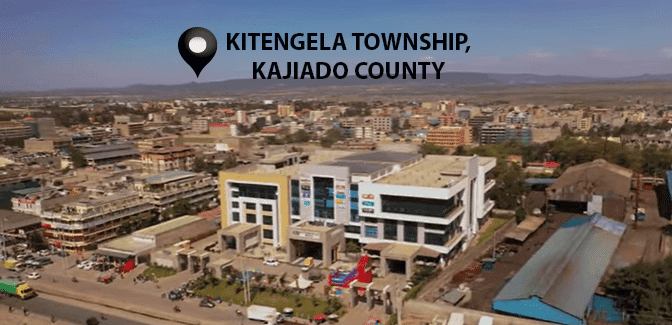
Conclusion
The rise of rental housing in Kenya reflects a combination of economic pressures, urban migration, and changing lifestyle preferences. While homeownership remains high in rural areas, urban centers are experiencing a decline as many residents opt to rent for flexibility and affordability.
For individuals deciding between renting and buying, it is essential to weigh financial capacity, long-term goals, and lifestyle needs. Renting may be ideal for urban professionals seeking mobility and lower upfront costs, while buying suits those looking for long-term equity and stability.
Investors and developers can capitalise on these trends by targeting high-demand rental areas, offering modern amenities, and balancing supply with urban demand. Understanding these dynamics ensures smarter decisions in Kenya’s evolving housing market.


